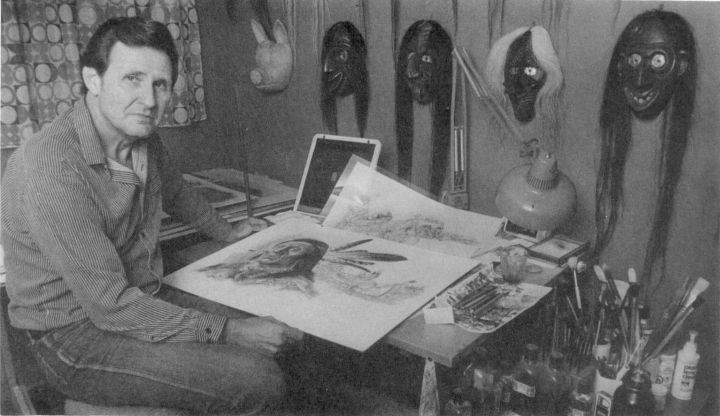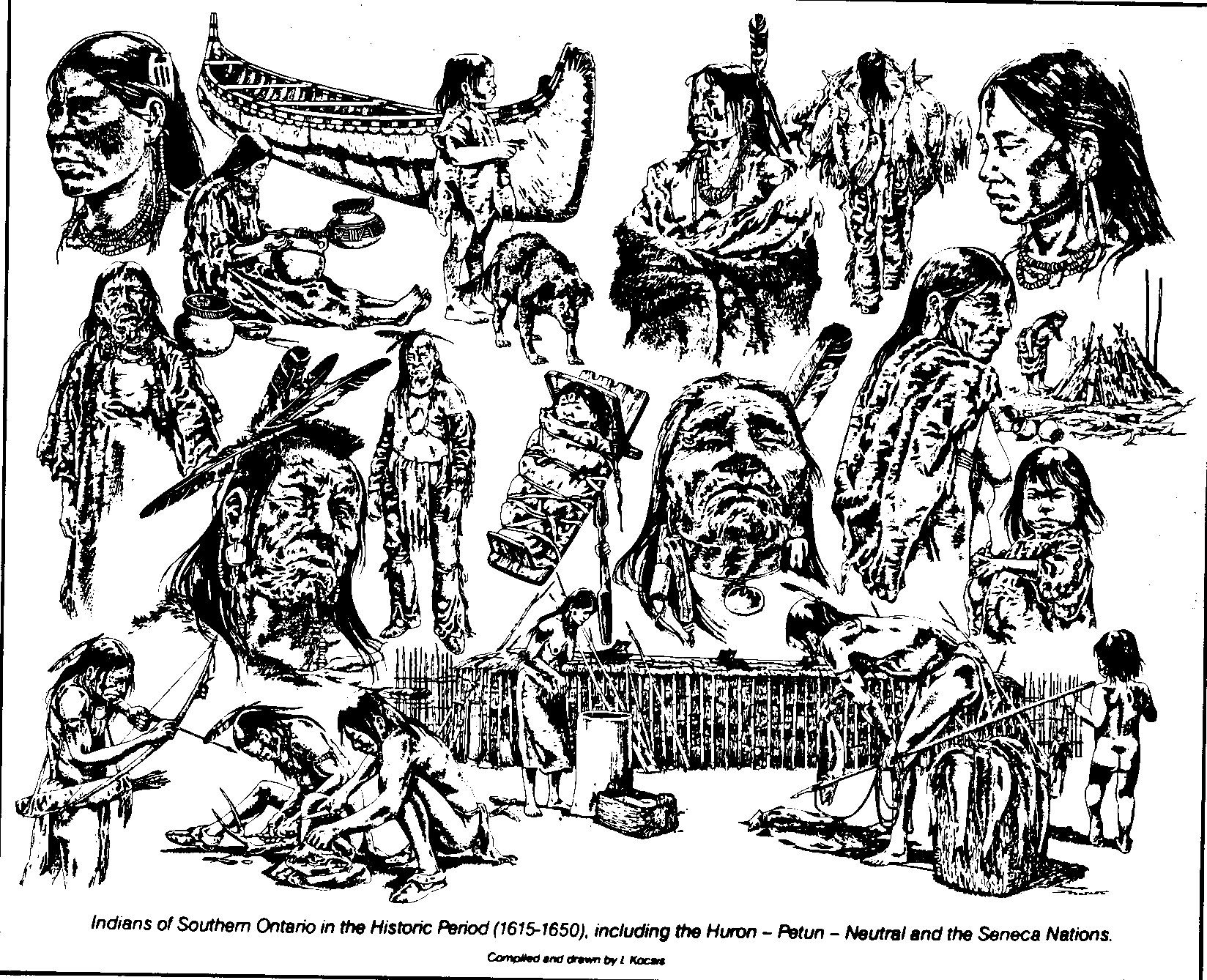Hungarian Canadian Profiles
The Hungarian "Remington"of Canada
IVAN KOCSIS
by
Dr. B. Kemennes-Kettner
HUNGARIAN HERITAGE REVIEW, Volume XVII, No. 1. January 1988

Hungarian Canadian Profiles
The Hungarian "Remington"of Canada
IVAN KOCSIS
by
Dr. B. Kemennes-Kettner
HUNGARIAN HERITAGE REVIEW, Volume XVII, No. 1. January 1988

The great bay of Lake Huron, the "Georgian Bay", together with the hundreds of its little islands presents an un- forgettable picture especially when dress- ed in the glory of its fall colours.In my younger years, I used to spend the hunting season there and while waiting in the early morning fog for the first tweets of the waking birds, often I almost could hear the soft shuffle of the mocassins of the Indian heroes of my childhood books. This is the location of the first white settlement west of Montreal, the leafy battlefield of the eternal Huron-Iroquois con- test; St. Marie among the Hurons at Midland.
After the hunting was over I usually visited the church on the hill raised to the memory of the Jesuit martyrs, and naturally the first Christian Huron settlement on the other side of the little creek.
In the souvenir shop I found some prints with Indian themes. They surprised me with their quality so I bought some. I did not look at the signature until I got home: Ivan Kocsis. After this I started to look for this type of print and I met the name again. It started to get interesting. I started to inquire after him, but among the Hungarians nobody seemed to know him.
My hunting days now are over, yet almost like a pilgrimage, I visit Midland every fall. On my latest visit I finally found a short English biography of Ivan Kocsis. To my great surprise he was living in the nearest large city to me: Hamilton. What followed was a telephone call, and this is the background of this article.
Both Ivan Kocsis and his wife, Julia, speak Hungarian. He is from Ujpest where he was born in 1933. He studied at the Academy of Arts in Budapest and also acquired training as an engraver. He arrived in Canada in 1957 and found employment with Superior Engravers Ltd. He is still with the company, but now as its artistic director.
With an inquisitiveness characteristic to Hungarians, he was curious about the past of the country in which he settled. When he learned about the Indian past of the Niagara Peninsula he started to look and dig. His efforts proved to be successful. He found and collected more than 3,000 pieces of Indian relics. He started to draw the objects he collected. However that made him even more curious about the people to whom the objects once belonged. Based half on research, half on imagination his first Indian portraits were made, followed by genre scenes of Indian life. These works raised an interest in official circles who picked up his works and gave commissions to make others. To widen his knowledge they made it possible for him to meet the elders of the tribe whose memory preserved the myths and lore of their ancestors.
His works are now in the National Museum in Ottawa, the Royal Gallery in Toronto and in galleries and museums across Canada and the United States. The Federal Government commissioned him to paint the murals of the Central Indian Museum.in London, Ontario. Later, the same museum became the home of his personal collection. He started to acquire a fame that is slowly expanding over the linguistic borders into other areas.
At present the government of Costa Rica asked him to act as an adviser. He remarks matter of factly: I am learning Spanish to make possible a more close communication with the people I have to work with.
His prints sell well in the hundreds of thousands.
In spite of his constant work it is hard to see any finished work in his studio, because it is sold as soon as it is finished. To exhibit his work he has to borrow them back from the galleries and private owners.
Among his successes is the commission to paint the two pictures that were presented to Pope John Paul at the time of his Holiness' Canadian visit. The Smithsonian Institute ordered a complete series of Indian portraits and genre pictures. Mr. Kocsis' works and advice are often utilized by the National Film Board and he lectures often and teaches classes about the Indian past. At the present there is a book in the making about the same subject.
As I read the English language publications about Kocsis it gives me a warm feeling to note that his being a Hungarian is emphasized everywhere. His peers respect him without reservation.
While I am reading about him I have to ask myself: "How is it possible that works and achievement like his is largely unknown among his own people?" He is a scientist, an artist about whom no Hungarian publications has ever printed anything. Would it be an exaggeration to regard him as the "Laszlo Gyula" of the Hungarian emigration.
When I asked Mr. Kocsis how he has time for so many things while being a full time artistic director of a company, he confessed: "Generally I sleep five (5) hours a day; I spend a little time with my orchids. If a little time is left over I use it to carve Indian ritual masks for, my own pleasure."
Today I know who Ivan Kocsis is: a Hungarian scientist, artist and profoundly sensitive man.

